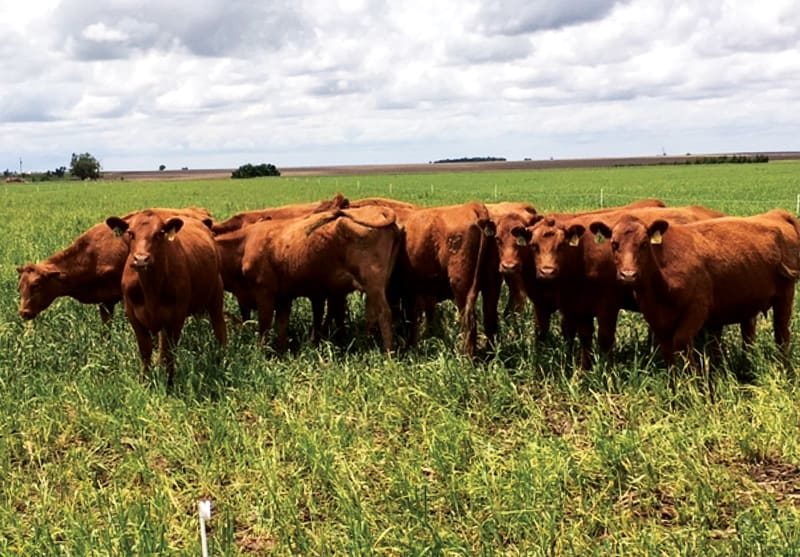No-Till Farmer
Get full access NOW to the most comprehensive, powerful and easy-to-use online resource for no-tillage practices. Just one good idea will pay for your subscription hundreds of times over.

HEALTHY FORAGE. Grazing on a several-species mix of cover crops allowed the cattle in this the 2016-17 study gain a bit more than 2 pounds a day over the course of a month.
Recent research in the High Plains is showing cover crop and forage mixtures offer soil-building and profit potential even to growers in areas of low rainfall.
A 2 year on-farm study by researchers from Colorado State University, Kansas State University, and USDA’s NRCS shows spring-planted covers afford growers 30-40 days of grazing before a fall-seeded winter wheat crop, as well as measurable improvements in soil quality.
Meagan Schipanski, an assistant professor of cropping systems at CSU and a principal researcher on the 2016-17 project, says the results show cover crops provide cropping system flexibility, even to growers in semi-arid conditions in some years.
“Many growers are concerned that a cover crop will use valuable moisture needed for subsequent small grain crops in the fall when compared with just fallowing the fields,” she explains. “The results of this study show fallow management does provide more moisture at the 3-6 foot level than in treatments of a spring-planted and grazed cover mixture, but moisture levels nearer the surface were usually not significantly different.”
Schipanski says the deeper moisture found in fallowed ground would make a difference to small grain production, particularly if no rain fell through the growing season after establishment.
“We’re diversifying the income stream and reducing inputs to offset potential yield drag in the following wheat crop…”
— Meagan Schipanski
“There’s good reason to believe wheat roots get that deep and that you would notice a difference if you didn’t get any more rain,” she explains. “If it doesn’t rain…